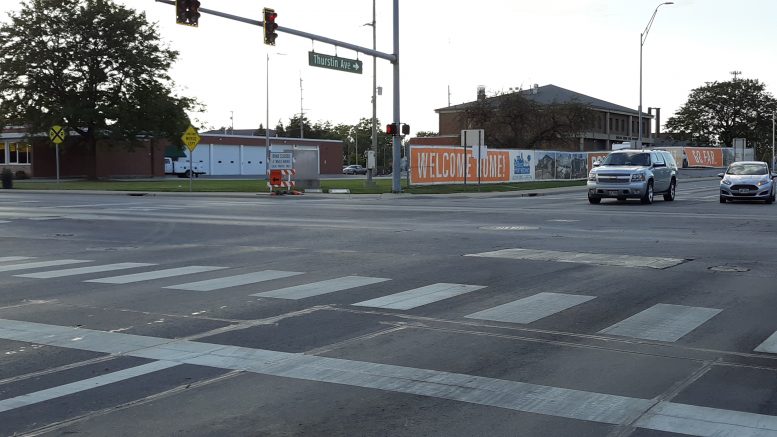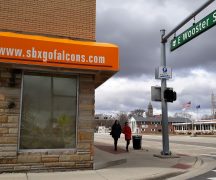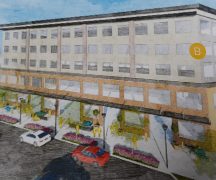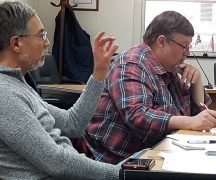By JAN LARSON McLAUGHLIN
BG Independent News
The Bowling Green Planning Commission voted Wednesday evening to recommend that the first two sections of “Gateway District” zoning be put into action between the BGSU campus and the city’s downtown.
The city has asked that 2.76 acres it owns at the northwest corner of East Wooster Street and Thurstin Avenue be changed to the new Gateway District zoning classification. That space is currently occupied by the fire station and city’s electric division.
The city has plans for a “transformational project” in that area of East Wooster Street between the BGSU campus and downtown, explained Bowling Green Planning Director Heather Sayler.
“There’s a lot of potential here,” Sayler said.
In an effort to make optimum use of that area between campus and downtown, the city is looking for properties on which to relocate the fire station and electric division.
Also recommended for rezoning is the city’s public parking lot off Manville Avenue, and two of the business locations in the southwest corner of East Wooster Street and Manville Avenue. The owners of the businesses at 518 and 522 East Wooster Street (Pita Pit and the former site of Inspector Gadget), Craig and Barbara Cheetwood, took the city’s offer to change the zoning for free.
Public hearings were held Wednesday evening about changing those properties to Gateway District zoning. No objections were recorded.
City Council established the Gateway District earlier this year. The goal was to make better use of prime property for a more welcoming and functional facade to the city.
Though there has not yet been interest by investors in the area, Sayler said the rezoning of the property will make it ready for development.
“Every inch of these properties will be critical moving forward,” she said.
The new zoning category works under a different premise than much of the city’s zoning classifications. Instead of focusing on keeping undesirable land use out, this would focus on attracting desirable uses in.
It is being tried first in the city’s newly named Gateway District – the area along East Wooster Street between Thurstin/Manville and Enterprise streets.
Unlike much of the current zoning, the Gateway zoning discourages single-use buildings – so it would not allow buildings that are completely apartments.
The zoning follows the belief that people want areas to allow for personality, like more street trees, more bike and pedestrian pathways, more green space, and more places that look appealing. They want “street life” that includes outdoor dining on sidewalks, businesses on the first floor like a gym or coffee shop, and residential units above.
Parking garages will be encouraged behind some of the buildings, since paving huge parking lots is a waste of prime real estate. And the city will consider a requirement of bike parking spaces for each building.
City officials are looking at the area being used to make a statement about the community.
The statement would be made with buildings between three and six stories tall. The first floors of the buildings would be at least 16 feet tall in retail areas. The exteriors would be required to have lots of windows, and use similar building materials of brick, stone, metal, glass or wood. Vinyl siding would be prohibited.
The planning commission’s recommendations will now go before City Council.
“This is achieving a long-term City Council goal,” Sayler said. “It really does have the potential to foster the connectivity we’re looking for between the university and downtown and also supporting our neighborhoods.”
“It really wasn’t that long ago when this plan was hatched,” said Planning Commission President Jeff Betts. “It’s nice to see the planning process come to fruition.”
Also at Wednesday’s meeting, it was announced that the planning commission will hold a public hearing on the city’s proposed Historic and Architectural Preservation Code on Jan. 6, at 7 p.m.




